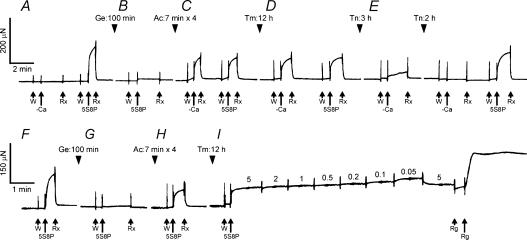Figure 3. Slow pen traces of isometric tension at each step of reconstitution.
A–E, a slow pen trace of isometric tension at each step of removal and reconstitution of the thin filament in one myocardium. In A, a control (untreated) myocardium was first tested with a solution without Ca2+ (−Ca) to demonstrate that active tension did not develop without Ca2+. Then the myocardium was treated with the standard activating solution (5S8P, pCa 4.66) at 25°C. Before activation, the myocardium was immersed in the same 5S8P solution at 0°C (labelled W) to wash out BDM, which was present in the Rx solution. The myocardium did not develop active tension in W because of the low temperature. In B, the myocardium was treated by gelsolin (Ge) for 100 min, and then immersed in the 5S8P solution at 25°C with the result that no tension developed, thus demonstrating that the thin filament was sufficiently removed so that there is no overlap between the thick and the thin filaments. In C, the actin filament was reconstituted for 28 min over four sessions (Ac), then the myocardium was immersed in the solution without Ca2+ (−Ca) followed by the solution with Ca2+ (5S8P) at 25°C. Both treatments resulted in the same active tension development, demonstrating the absence of the regulatory system. In D, Tm was reconstituted for 12 h (Tm). Once again, the active tension developed irrespective of Ca2+. In E, reconstitution with Tn was first performed for 3 h; this turned out to be insufficient, as can be seen by the Ca2+-insensitive tension. An additional reconstitution for 2 h was necessary to fully restore the Ca2+ sensitivity, as represented by no tension in the absence of Ca2+, and tension levels close to the original tension (A) in the presence of Ca2+. F–I, another myocardium was similarly treated as in A–D, resulting in reconstitution of the actin filament with Tm. In this myocardium, the complex modulus data were collected at 7 different MgATP concentrations (0.05–5 mm), as indicated in I. The standard activation at 5 mm MgATP (5S8P) was repeated to detect any decrease in active tension; the preparation was discarded if more than 20% of tension was lost. This activation was followed by an induction of the rigor state with the Rg solution. In all experiments, relaxation was obtained in the solution containing 40 mm BDM (Rx) at 0°C. All activations including rigor (Rg) were performed at 25°C.

